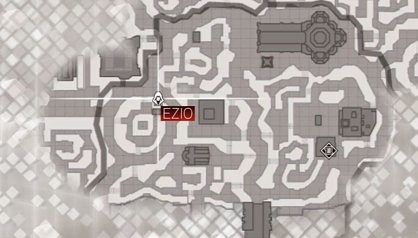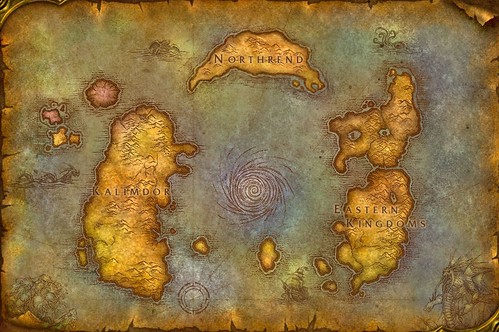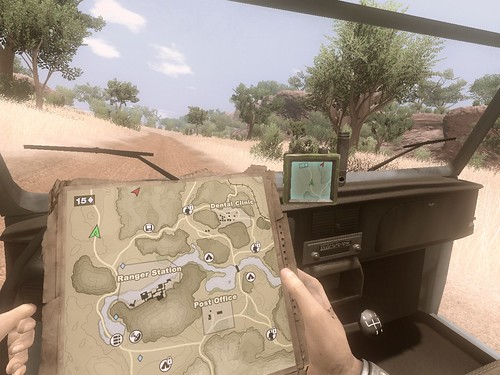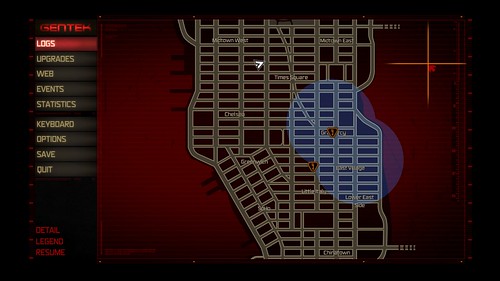TOM FRANCIS
REGRETS THIS ALREADY
Hello! I'm Tom. I'm a game designer, writer, and programmer on Gunpoint, Heat Signature, and Tactical Breach Wizards. Here's some more info on all the games I've worked on, here are the videos I make on YouTube, and here are two short stories I wrote for the Machine of Death collections.
Theme
By me. Uses Adaptive Images by Matt Wilcox.
Search
Open World Games: What Works And Why
It felt like last year open world games took over, and stopped being high-budget exceptions to the norm. It’s now pretty commonplace for a game’s linear story to be just the main attraction in a fairground of challenges, collectibles and distractions. ‘Go anywhere, do anything’ games have been around since the eighties, but it’s only in recent years developers have figured out the hooks, tricks and bribes to get a wider audience playing them.
Most of them kinda suck though, don’t they? Not the games themselves, necessarily, but their approaches to filling these sprawling open spaces with stuff to entertain you. They know how to make a traditional game, and they know how to make an open world, but their attempts to fit the two together amount to mashing a square peg into a round hole until it splinters.
I’m interested in whether there’s a way to take the most successful of these systems and make them work with the world, and each other. To fit with the fiction rather than jar with it, and to draw attention to the world rather than distract from it.
So ignoring how much we like them as games for a moment, what do some of the better open worlds fill their lands with, and how well does it work?
Assassin’s Creed 2:
- Series of story missions that lead you through each new city
- Scattered mini-missions that conform to one of a few templates (contracts, courier, etc)
- Informal missions like chasing any thieves you see
- Isolated unique puzzle/platform levels
- Collectibles, some of which assemble to shed light on the plot
The broad variety means there’s always something you feel like doing, and most of it is integrated into the fiction – albeit by clumsily grafting two different fictions together. The informal missions feel like fun because no-one tells you to do them, and failing is no big deal. The puzzle/platform levels are usually welcome because you know what you’re getting into when you take one on.
World of Warcraft:
- Miscellaneous quests
- Large scale co-op dungeons
- Resource nodes
- PvP arenas
It’s nice that there’s stuff to do wherever you go, but the lack of a main quest and presence of other players doing the same ones makes it hard to feel like what you’re doing matters.
Fallout 3:
- Series of story quests
- Character-driven sidequests without obvious rewards
- Occasional unique locations, people and loot (Oasis, Dogmeat, Alien Blaster)
The density of hand-scripted missions to find is enough that exploring is always appealing, and the unique stuff is rare enough to feel special, but common enough that everyone finds some of it. The main story has its moments, but your motivation for it is disastrously weak.
Far Cry 2:
- Two main story mission threads that sometimes merge
- Optional extra objectives to those missions with little reward
- Template mini-missions: convoys, assassinations
- A set of FedEx missions you have to keep doing to stay alive
- Trickily placed collectibles with a material reward
The main missions feel annoyingly disconnected from your objective, and the choice between them is illusory. The template missions are excellent because the templates themselves are compelling, but they never feel like more than that. The thoughtful placement of collectibles makes them much more fun to hunt, even if you don’t need the money.
Prototype:
- Series of story missions that change the city from peaceful to wartorn
- Fairground-style challenges
- Collectibles and destroyables that grant XP
The story missions are mostly bad, and the challenges are ridiculously divorced from the fiction. The changing city would be cool if you could make any of it yours, but instead the only influence you have is deciding which of two factions that hate you control certain bits.
Red Faction Guerilla:
- Series of story missions that conquer each area, making it safe and unlocking new one
- Template mini-missions: hostage rescues, defenses
- Fairground style challenges
The mini-missions do a good job of providing a choice of fun stuff to do without breaking fiction. The fact that the story moves on from each area, though, makes it feel less like a world and more like levels.
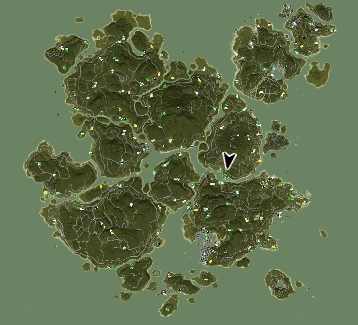
Just Cause:
- Series of story missions
- Scattered identical mini-missions to take over settlements
- Template mini-missions
- Collectibles
Since the mini-missions keep you in a small area and are very similar to play, they don’t offer much of a break. Neither do they or the collectibles carry an appealing reward.
It seems like the things that work best, or are most needed, are:
- Informal missions – opportunities you spot rather than jobs you’re ordered to do
- Collectibles that improve you, in places it’s fun to visit
- Categorised missions, so you can choose what kind of job you want to take on next
- Scraps of story scattered about to make your adventure feel meaningful
- Unique things you can find, take and use
- The ability to change or add to some part of the world
- Variety – at every stage you should have more than two meaningfully different options for fun things to do next
Any additions? Anything you really like in open world games in general, or a specific one? The next post will be figuring out how to cram all the good stuff into one specific open world.
More Game Design Ideas
